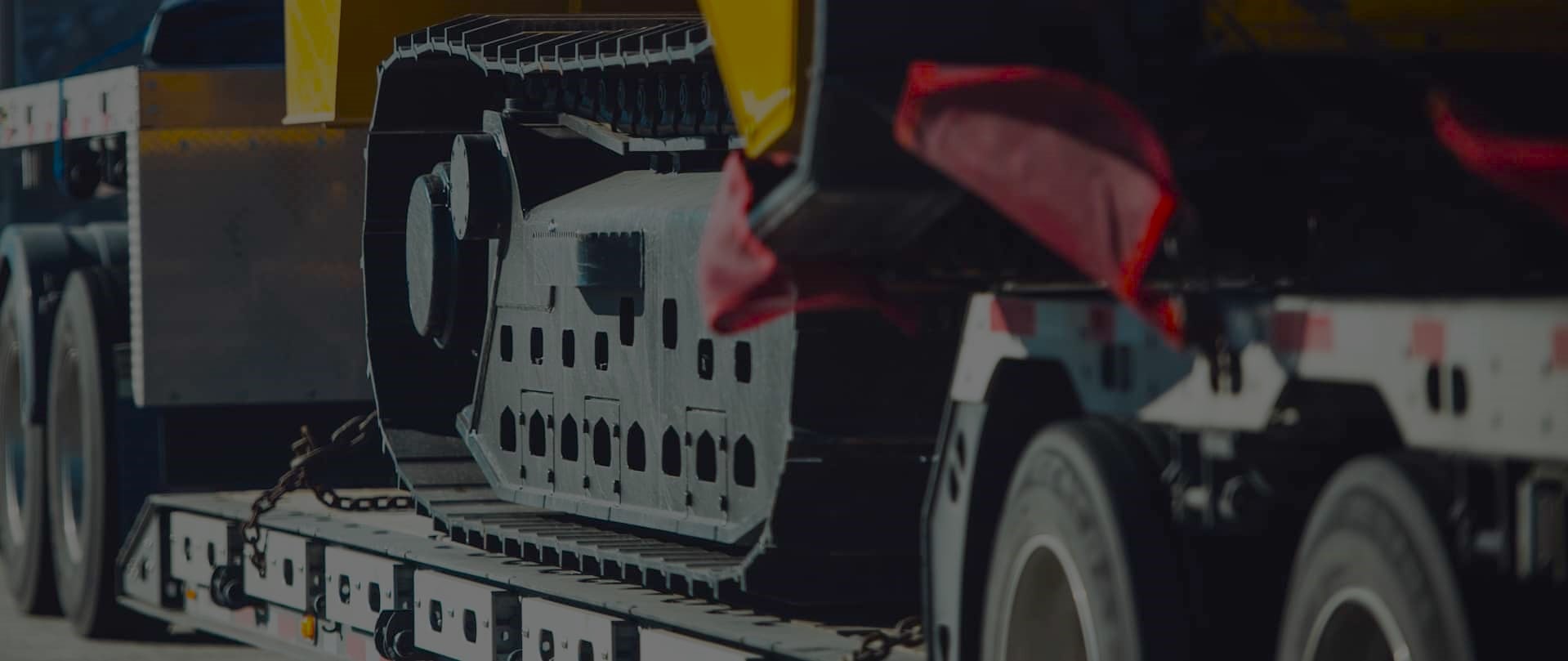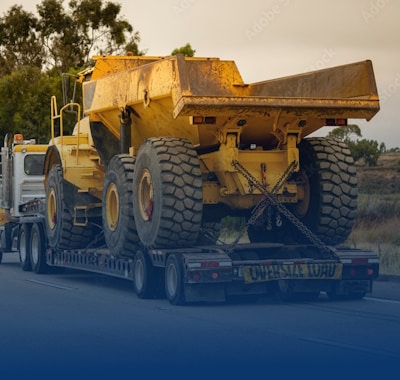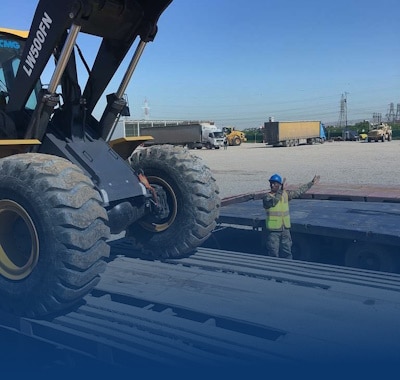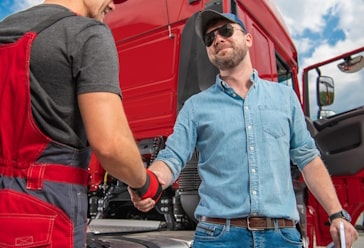Top 10 Largest Mining Equipment Moves in History
Freedom Heavy Haul can offer expedited Pickup and Delivery for any size shipment anywhere in the USA. Contact us today for No Hassle, No Pressure Pricing.
Throughout history, the world has witnessed remarkable feats in the field of heavy machinery. These achievements have set new benchmarks in engineering and production. From massive excavators to colossal trucks, these machines have reshaped industries and pushed the boundaries of what’s possible.
One of the most iconic examples is the Bagger 293, a bucket-wheel excavator known for its staggering size and capacity. Another notable machine, the Bagger 288, stands as a testament to human ingenuity in construction and design. These machines not only demonstrate advanced technology but also highlight the importance of efficiency and precision in heavy-duty operations.
Understanding the technical details, such as tonnage and design, is crucial for appreciating these engineering marvels. Our expertise allows us to delve into the intricacies of these machines, backed by reliable data from industry sources. For more insights on handling such equipment, check out our guide on moving heavy machinery.
These monumental moves reflect advancements in heavy-duty machinery and serve as a foundation for future innovations. Join us as we explore these incredible achievements and their lasting impact on the industry.
Setting the Stage: The History and Impact of Monumental Equipment Moves
The development of heavy machinery has been a cornerstone of industrial progress. From the early days of manual labor to the advanced machinery we see today, these innovations have reshaped industries and set new standards for efficiency and productivity.
The Role of Heavy Machinery in Shaping Mining History
Heavy equipment has played a crucial role in the evolution of mining operations. Early vehicles were limited in capacity and relied on manual labor. Over time, advancements in design and technology led to the creation of powerful machines like the Hitachi EX8000 and Komatsu PC8000. These machines revolutionized the way materials were extracted from the surface, increasing both speed and safety.
One notable example is the Liebherr R9800, a mining excavator known for its impressive weight and cubic capacity. Such machines have not only improved operational efficiency but also reduced the environmental impact of mining activities. For more insights on handling such equipment, check out our guide on heavy-duty machinery hauling.
Global Influence and U.S. Market Dynamics
The influence of heavy machinery extends beyond national borders. Countries around the world have adopted these technologies to enhance their mining capabilities. In the United States, the industry has seen significant growth, driven by innovations from leading manufacturers like Caterpillar and Komatsu.
The U.S. market has also benefited from the export of advanced machinery, contributing to the country’s economic strength. Below is a table highlighting key milestones in the evolution of mining equipment:
| Model | Manufacturer | Weight (tons) | Cubic Capacity (yd³) |
|---|---|---|---|
| Hitachi EX8000 | Hitachi | 811 | 40 |
| Komatsu PC8000 | Komatsu | 710 | 38 |
| Liebherr R9800 | Liebherr | 800 | 42 |
These milestones reflect the continuous pursuit of innovation in the industry. As technology advances, we can expect even greater achievements in the field of heavy machinery.
Evolution of Heavy-Duty Mining Machinery
From humble beginnings to groundbreaking advancements, heavy machinery has evolved dramatically. Over the decades, innovations in design and technology have transformed the way we approach mining operations. This evolution has not only increased efficiency but also improved safety and environmental sustainability.
Milestones in Excavators, Dozers, and Dump Trucks
The development of heavy machinery has seen remarkable milestones. Excavators like the Liebherr R9800 and Hitachi EX8000-6 have set new standards with their impressive weight and cubic capacity. These machines can handle massive loads, making them essential for large-scale surface mining operations.
Dozers and dump trucks have also seen significant advancements. Models like the Komatsu PC8000-6 have redefined capacity and tonnage, enabling faster and more efficient material handling. These innovations have reduced operational costs and minimized environmental impact.
Technological Innovations Driving Efficiency
Technological advancements have played a crucial role in improving machinery efficiency. Innovations in engine design, hydraulic systems, and automation have enhanced performance and reliability. For example, modern excavators feature advanced bucket designs that optimize material extraction.
Safety has also been a key focus. Enhanced control systems and real-time monitoring tools ensure safer operations. These technologies not only protect workers but also extend the lifespan of the equipment.
For more insights on the challenges of transporting these massive machines, check out our guide on transporting large mining equipment.
Top 10 Largest Mining Equipment Moves in History
The scale of engineering achievements in heavy machinery has left an indelible mark on industries worldwide. From colossal excavators to massive trucks, these machines have reshaped industries and pushed the boundaries of what’s possible. Below, we explore some of the most impactful moves and the record-breaking feats they achieved.
Overview of Impactful Moves and Record-Breaking Feats
Transporting oversized machinery is no small feat. It requires meticulous planning, advanced technology, and a deep understanding of engineering principles. Here are some of the most remarkable moves in history:
- Bagger 293: This bucket-wheel excavator, weighing over 14,000 tons, is one of the largest land vehicles ever built. Its transportation required custom-built trailers and careful route planning.
- Big Muskie: A dragline excavator weighing 13,500 tons, it was moved in sections across Ohio in the 1960s. The operation set new standards for heavy machinery transportation.
- Liebherr R9800: This mining excavator, with a weight of 800 tons, was transported to a remote mining site in Australia. The move showcased the capabilities of modern logistics.
Case Studies of Iconic Moves and Their Engineering Challenges
Each of these moves presented unique challenges. For example, the transportation of the Bagger 293 required the construction of temporary roads and bridges. Similarly, moving Big Muskie involved disassembling the machine into smaller components, each requiring specialized handling.
Here’s a closer look at the technical details of these iconic moves:
| Model | Weight (tons) | Distance (miles) | Key Challenges |
|---|---|---|---|
| Bagger 293 | 14,200 | 15 | Route planning, temporary infrastructure |
| Big Muskie | 13,500 | 25 | Disassembly, specialized trailers |
| Liebherr R9800 | 800 | 1,200 | Remote location, extreme weather |
These moves not only demonstrate the capabilities of modern engineering but also highlight the importance of professional transport services in ensuring safety and efficiency. For more insights into the challenges of moving heavy machinery, check out our guide on large-scale machinery transportation.
Engineering Feats and Technological Breakthroughs Behind the Moves
The engineering behind moving massive machinery is a testament to human ingenuity and innovation. These monumental moves required cutting-edge solutions to overcome complex challenges. From advanced materials to precise machinery control, every aspect was optimized for efficiency and safety.
Overcoming Logistical and Design Challenges
Transporting oversized machinery demands meticulous planning. Routes must be carefully mapped to avoid obstacles like bridges and narrow roads. For example, moving the Bagger 293 required temporary infrastructure to support its 14,200-ton weight. Such operations highlight the importance of precision in logistics.
Design challenges also play a critical role. Machines like the Liebherr R9800 are built for remote locations, requiring modular designs for easier transport. These innovations ensure that even the heaviest equipment can be moved safely and efficiently.
Integration of Advanced Materials and Machinery Control
Modern machinery relies on advanced materials to enhance durability and performance. High-strength alloys and composite materials reduce weight while maintaining structural integrity. For instance, the Hitachi EX8000 uses reinforced steel in its bucket design, allowing it to handle massive loads with ease.
Machinery control systems have also seen significant advancements. Digital monitoring and automation improve precision in operations. These technologies not only boost efficiency but also enhance safety by reducing human error.
“The integration of advanced materials and control systems has revolutionized the way we move heavy machinery,” says an industry expert.
These breakthroughs have set new standards in the industry, paving the way for future innovations. By combining engineering expertise with cutting-edge technology, we continue to push the boundaries of what’s possible in heavy machinery transportation.
Mining Equipment Moves and the U.S. Manufacturing Landscape
The U.S. manufacturing sector has long been a driving force in the global mining industry. With a focus on innovation and efficiency, American manufacturers have set new standards in equipment design and production. Their contributions extend beyond domestic borders, shaping industries worldwide.
Economic Contributions and Export Strength
The economic impact of U.S. manufacturers is undeniable. Companies like Komatsu Mining Corp. and Caterpillar Mining generate billions in revenue annually. Their advanced machinery is exported to over 100 countries, reinforcing the U.S. as a leader in the industry.
These exports not only boost the economy but also support global mining operations. For instance, the Hitachi EX8000 and Komatsu PC8000 are widely used for their capacity and reliability. This export strength highlights the strategic importance of U.S. innovation in production.
Profiles of Leading U.S. Mining Machinery Manufacturers
Komatsu Mining Corp., headquartered in Milwaukee, Wisconsin, is a key player in the industry. With over 10,000 employees, the company specializes in excavators, loaders, and trucks. Their machines are known for their durability and high tonnage handling capabilities.
Caterpillar Mining, based in Peoria, Illinois, is another industry leader. Their equipment, such as the shovel and bucket designs, is engineered for efficiency. Caterpillar’s global presence ensures that their machinery supports both domestic and international markets.
These manufacturers not only drive economic growth but also push the boundaries of construction and operation efficiency. Their commitment to innovation ensures that the U.S. remains at the forefront of the mining industry.
Reflections on Monumental Achievements in Mining Equipment Moves
The achievements in moving massive machinery have redefined what’s possible in industrial operations. From colossal excavators to powerful trucks, these feats showcase the blend of technical prowess and logistical mastery that drives the industry forward.
We reflect on the lessons learned from historical and modern case studies. Machines like the Liebherr R9800 demonstrate the importance of capacity and weight management in operations. These moves highlight the critical role of precision in construction and transport.
The lasting influence of these achievements is undeniable. They inspire innovation in machinery design and operation control, setting new benchmarks for efficiency and safety. For those managing such projects, understanding logistics for oversized equipment is essential.
As we look to the future, continued advancements in equipment technology will shape the industry. These monumental moves remind us of the incredible potential when engineering expertise meets meticulous planning.







